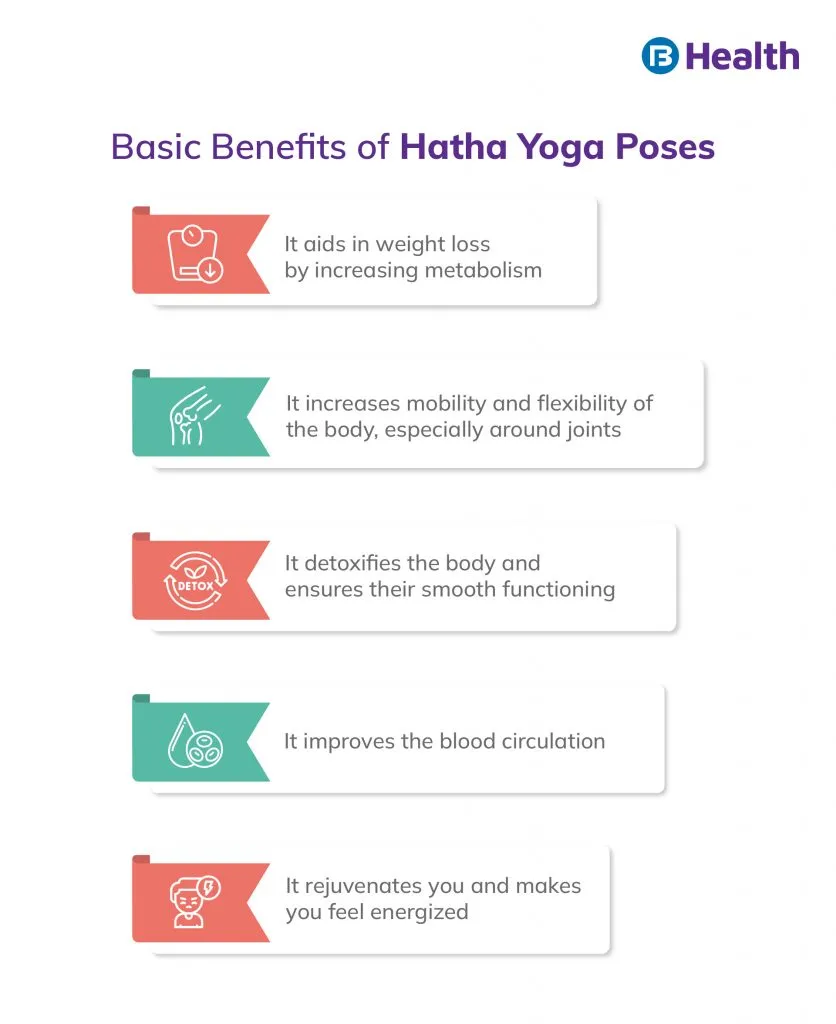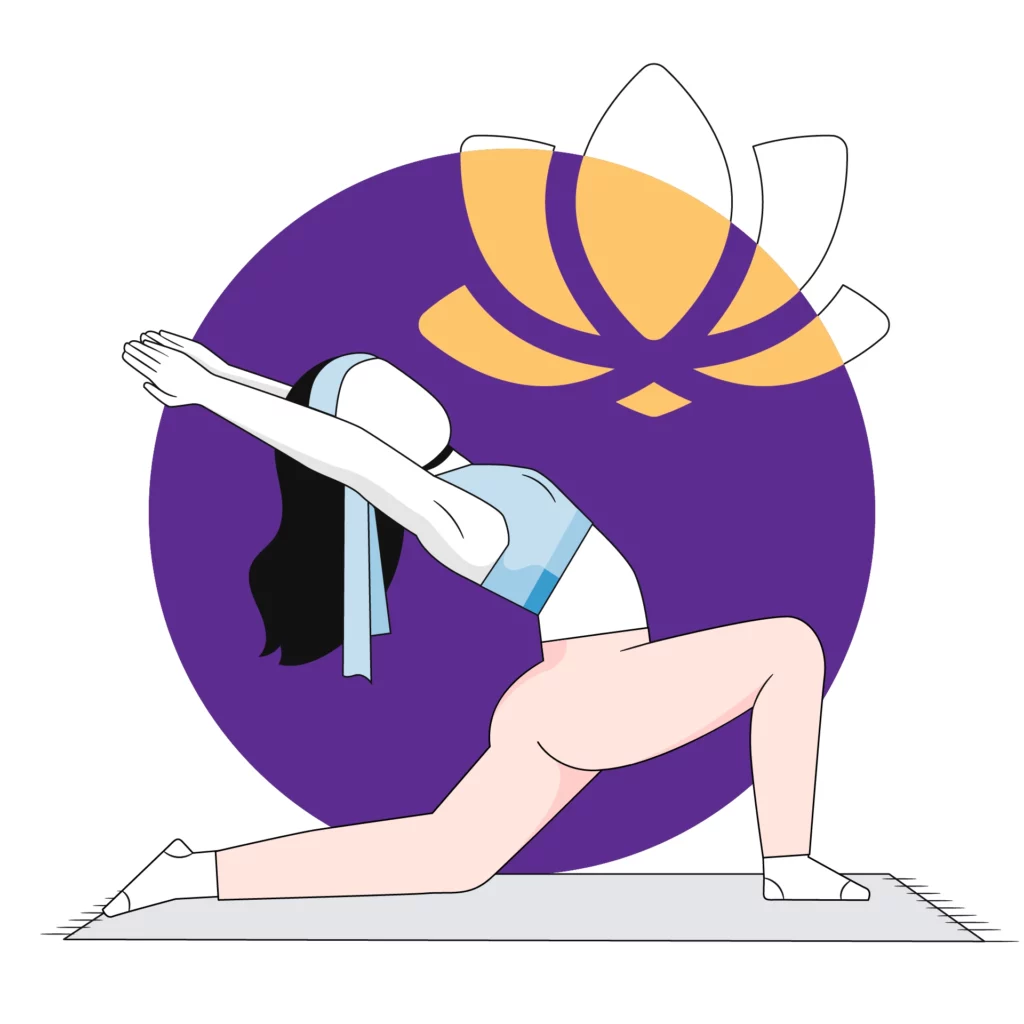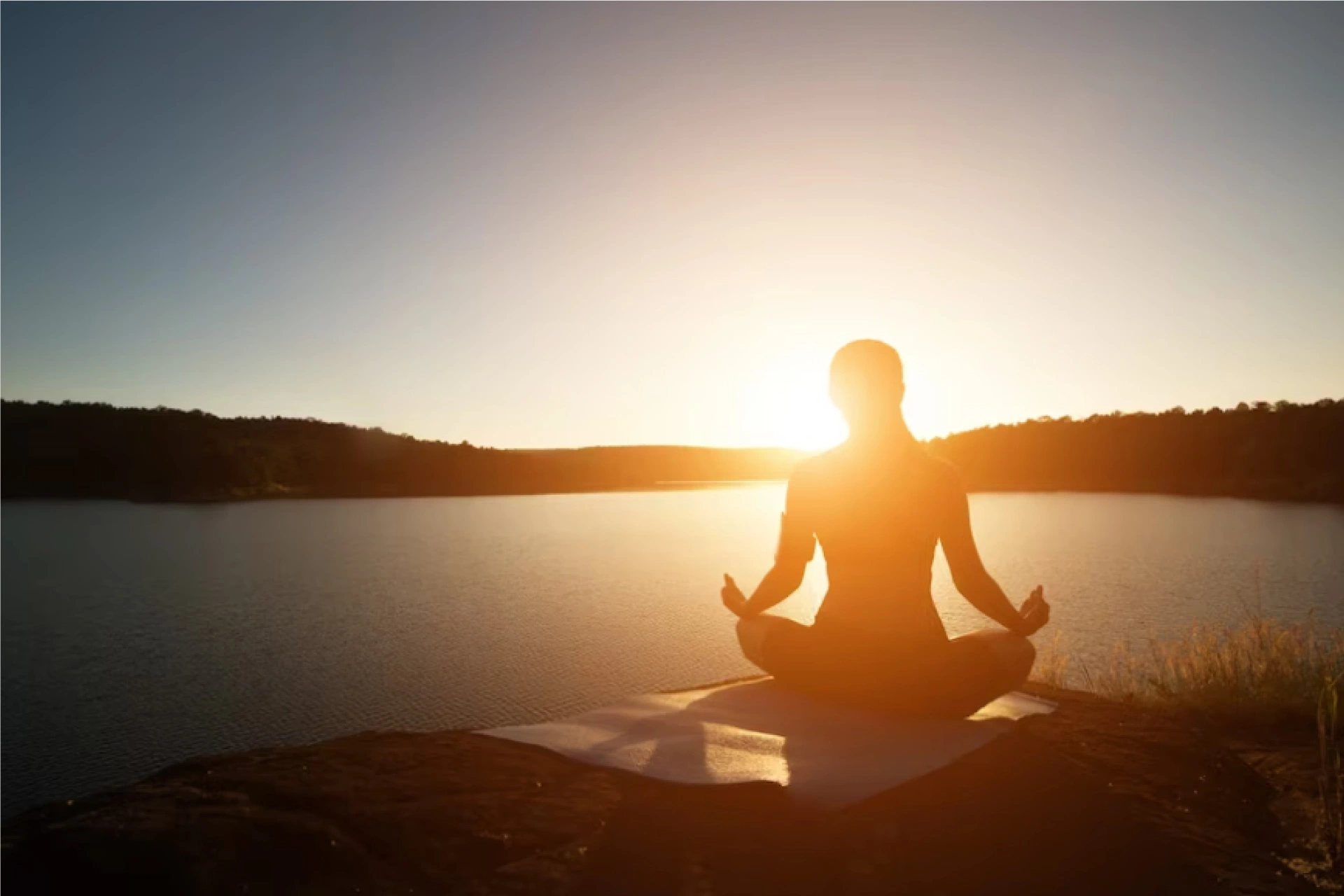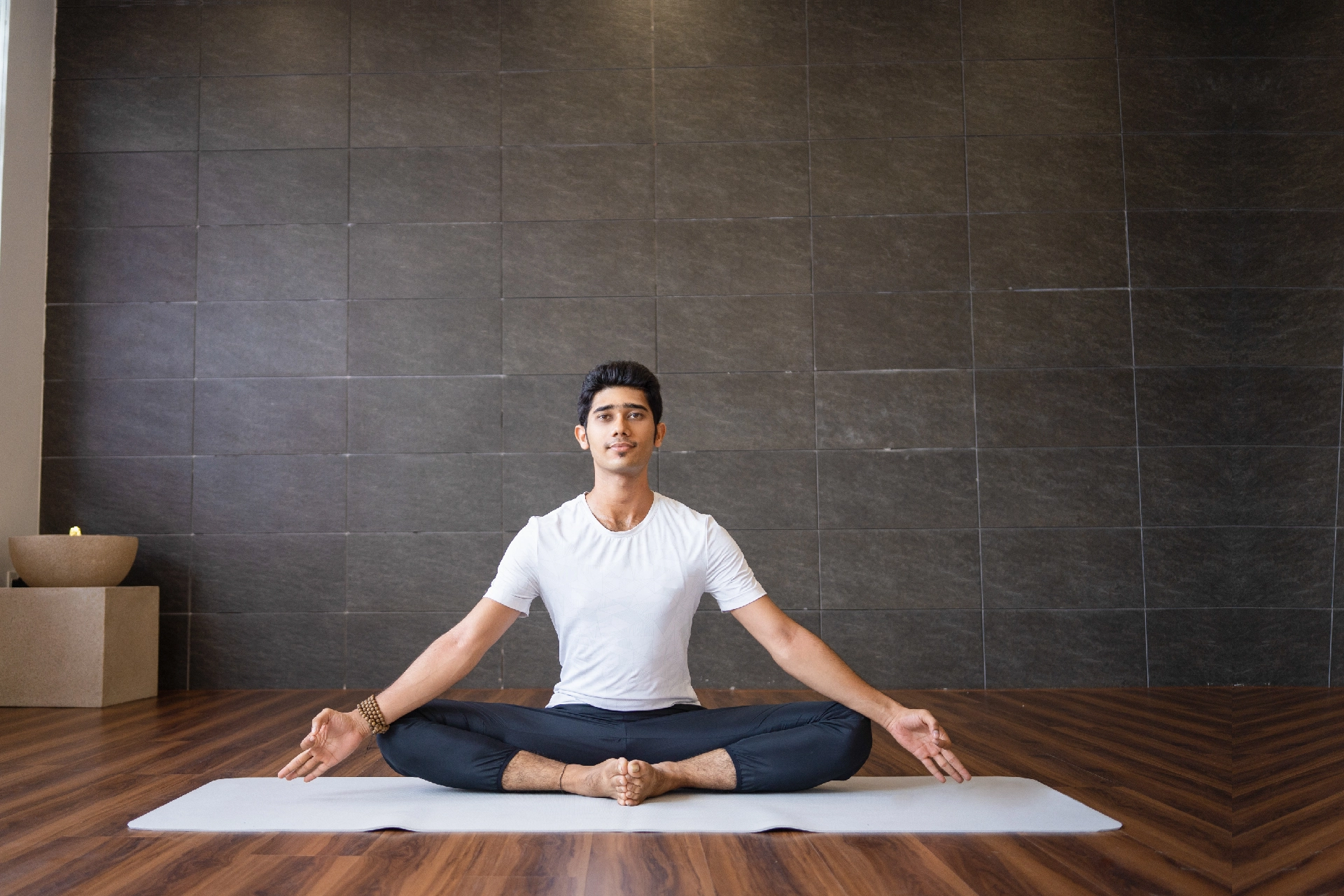Physiotherapist | 9 min read
4 Types of Hatha Yoga and How they Benefit You?
Medically reviewed by
Table of Content
Synopsis
Raja Yoga is the ancestor of Hatha Yoga. It is Raja Yoga's streamlined version, lacking the Yam as and niyamas. All yoga postures and pranayama activities can be categorized as Hatha Yoga, to put it simply. Therefore, you practice Hatha Yoga if you engage in any yoga asanas or pranayama techniques.
Key Takeaways
- The first rule of Hatha Yoga - select the style that best fits your fitness and attitude goals
- It is the first work to explicitly teach Hatha Yoga and the first to explain kriyas or purification
- The Hatha Yoga Pradipika is based on altering the physical body, controlling and cleansing the body's subtle energies,
Hatha translates to "stubborn" in Sanskrit. Therefore, practicing Hatha Yoga implies doing yoga obstinately without the five senses or the mind interfering [1]. Hatha Yoga is typically only associated with asana practice. But to reach the sublime condition of samadhi, one must engage in the disciplined practices of asana, pranayama, Dharana, and Dhyana. The yogi is liberated from the illusion of form, time, and space when they go into samadhi. One of the six practices in this path is asana.
Given that Hatha Yoga helps to cleanse our solar (Pingla) and lunar (Ida) pathways, it's fascinating to know that some teachers describe Hatha as Ha (sun) + Tha (moon) yoga [2].
What is Hatha Yoga?
The method of yoga preparation is known as Hatha Yoga. "Ha" means the sun, and "ta" means the moon. "Hatha" refers to the yoga that is practiced to balance the sun and moon, or the Pingala and Ida, within you. Hatha Yoga can be explored in ways that push you past certain boundaries. At its core, it is a form of physical preparation that prepares the body for greater possibilities.
There are more aspects to this, but to put it simply, you can guess what someone is going through by looking at how they are sitting. If you observe, you'll notice that you sit differently depending on your emotions. Sitting postures differ when you're angry, joyful, and melancholy. Your body naturally prefers to adopt a particular posture for every state of consciousness or mental and emotional circumstance you go through. The science of asanas is the opposite of this. You can also raise your consciousness by purposefully changing the positions of your body.
Benefits of Hatha Yoga
Scientists and experts have shown that Hatha Yoga has a lot of advantages [3]:
Physical Advantages
The following are some advantages of Hatha Yoga for the physical body:
- It enhances joint mobility and is a good yoga for knee pain
- It enhances connective tissue flexibility
- It stretches the fascia and improves its condition
- It raises the metabolic rate
- It enhances the performance of all bodily systems
- It promotes cell regeneration and repair
- The ligaments get rejuvenated, and the spinal cord and brain's blood supply improves
- It helps to detoxify the body and activate the lymphatic system
- It increases the body's overall range of motion
- Energy levels get increased
- It enhances how well the heart and lungs work
- The sympathetic and parasympathetic nervous systems form a balance
- It is also one of the best yoga for hair growth
- You can practice Hatha Yoga for weight loss or core strength

Mental Benefits
Some of the benefits are:
- The senses become more at ease, attention gets enhanced, and the focus sharpens
- It stabilizes emotions
- It eases depression and anxiety
- It relieves mental exhaustion
- It fosters imagination
- It stimulates academic institutions
Types of Hatha Yoga
There are several types of Hatha Yoga:Bikram and Kundalini
Whatever method you use, the goal is to balance your mind, body, and soul and the energy surrounding you. Usually, this technique gets carried out in a heated space that is 105 degrees Fahrenheit and 40% humidity. It emphasizes detoxification and circulation enhancement. Kundalini yoga relies heavily on meditation and breathing exercises to balance the mind, body, and spirit.
Ashtanga and Anusara
The name Ashtanga yoga means "eight-limbed" yoga [4]. It covers several breath-synchronized Hatha Yoga position series. Sweating detoxifies muscles and organs during this time, increases circulation, and builds a calm and powerful physique. The primary goal of Anusara yoga is to harmonize the universe's energy with the physical body through the practice of Hatha Yoga postures. Anusara classes integrate Tantric philosophy, heart-centred topics, and alignment and adjustment practices.
Sivananda and Iyengar
The Sivananda system uses meditation, breathing exercises, and 12 fundamental Hatha Yoga postures. The Iyengar approach employs props such as belts, blocks, blankets, and bolsters. Integrating the intellect, body, and emotions is the goal.
Kripalu, Jivamukti and Viniyoga
Through yoga practice and Ayurvedic techniques, holistic health and self-discovery are prioritized at Kripalu Yoga. The Jivamukti Yoga system teaches that everything is interconnected and may coexist peacefully using yoga positions and five precepts. According to each practitioner's unique requirements, viniyoga practitioners can adjust and modify their practice. The poses incorporate chanting, movement, and breathing exercises.
How to Practice Hatha Yoga?
Breathe:
Observe your breathing. When you are rooted, start lengthening your inhales and exhales. You can also put your palm on your tummy to feel the rise and fall of your belly. Keep doing it for 5 minutes.
Meditate:
When you are fully present during Hatha Yoga meditation, you can start to breathe normally and allow your mind to be at ease. It's acceptable if your thoughts wander! It's a standard procedure! Just return your focus to your breath or the present moment.
Beginner Asanas:
Practice a few positions you are familiar with and hold them for at least five breaths. You can make this section of the practice as short or as long as your body can tolerate.
Savasana:
Dim the lights and perhaps play a peaceful song after your asana practice. Give your body the freedom to unwind and fully absorb the exercise.
Tips for Hatha Yoga
Ensure that you warm up
Warming up your muscles may seem futile with Hatha's emphasis on breathing and moderate movement, but it's crucial. Warming up increases blood flow throughout the body, which supports healthy muscle cell function. It stimulates synovial fluid, which shields joints.
Breathe in first
Even though it may seem apparent, paying attention to your inhalation and exhalation will give you a moment to reflect. Before you begin, pause for a moment and take a few deep breaths to check in with yourself. How do your mind and body feel right now? After all, the goal of Hatha is to help you develop this kind of connection with yourself. Don't be shy, then.
You only need 15 minutes
Your practice can be shorter if you're concerned about how you'll squeeze hours. It's ideal to find a calm area where you may slowly begin to go into your body for 15 to 20 minutes.
Ignore your fear of silence
While listening to soothing music when practising during the day can help you unwind, and it's usually preferable to turn off your speakers or headphones at night.
A leisurely practice in the evening is beneficial if you have difficulties winding down from your day or sleeping. With a background soundtrack devoid of lyrics, you can even lose yourself in the sounds to help you unwind after a long day.
Comfortable kit
Your limbs won't quite be interwoven spaghetti-style during this sort of yoga. Nevertheless, you should be able to move freely, so make sure you wear the right clothes. Leggings, crop tops, jogging pants, sweaters, pyjamas, or your old t-shirt are all acceptable attire. Who is making the judgments?
Remember to spend money on a good quality yoga mat.
Do not skip Savasana
Even though savasana, also known as corpse pose, is said to be the most crucial yoga practice of all the asanas, it might be alluring to miss it. However, no exercise should conclude without the opportunity for contemplation that resting on the ground with your hands facing upwards and your eyes closed.
It normalizes breathing, lowers the body's temperature, and soothes the central nervous system.
For every hour of practice, five minutes of savasana is advisable. Spend a few minutes in this condition during a 20-minute Hatha session. But pay attention to your body; you might require more.

Hatha Yoga Precautions
The asanas of Hatha Yoga are some of the most effortless and secure. The exercises don't need much effort. The movements and impact of Hatha Yoga asanas on the targeted muscles are both relatively gradual and gentle. However, this does not imply that you cannot suffer an injury while doing these asanas. You must be aware of the safety measures to be followed if you wish to practice Hatha Yoga. As far as Hatha Yoga for beginners is concerned, they get advised to enrol in a reputable class for a positive and injury-free experience.
Form and Posture
Good form and posture are essential to getting the most out of Hatha Yoga asanas. You cannot perform an asana haphazardly and expect to see positive outcomes. Poor posture increases your chance of suffering an injury, and if you face any, then immediately consult your general physician. Therefore, it is preferable to join a reputable Hatha Yoga program. You'll likely hear from the instructor how critical proper breathing and posture are.
Safety measures for Advanced Poses
Hatha Yoga asanas can be done by anyone, regardless of fitness level. However, some advanced poses, such as Shirshasana, Tadasana yoga (Mountain pose), and Garudasana (Eagle Pose), carry a risk if you are a beginner. Because of this, it's crucial to learn Hatha Yoga from qualified professionals. If an asana doesn't seem right, these instructors can advise you on how to modify it.
Yoga is not a competition
You must develop your fitness at the rate that your body can support. Joining a Hatha Yoga class will probably expose you to physically fit individuals and no trouble performing even the most challenging asanas. Being like them is not what you want to be. Being able to carry out the asanas properly is your aim. But if you try to go beyond what your body can handle, there's a good possibility you could hurt yourself.
Hatha Yoga can be a terrific way to get started, but it shouldn't get misconstrued as yoga that is "easy." It might still be difficult on a mental and physical level. Classes in Hatha Yoga offer an opportunity to stretch, relax, and release tension—essential for both hectic lifestyles and strenuous activities.
Don't entirely give up on yoga if you enter a Hatha class and it doesn't seem right. There are always numerous alternative Hatha-derived forms of yoga, such as Vinyasa yoga or Power yoga, which may suit your preferences better.
Get a consultation from Bajaj Finserv Health for more details. Getting a diagnosis in time improves your chances of combating illness. Having a health insurance plan can also make you more at peace. If you purchase a quality health insurance policy, you won't have to worry about how you'll afford your medical expenses should you get sick or have an accident, as your health insurance plan will cover them.References
- https://blog.decathlon.in/articles/learn-the-art-of-hatha-yoga-and-its-benefits#:~:text=What%20Does%20Hatha%20Mean%20In,five%20senses%20or%20the%20mind.
- https://www.arhantayoga.org/blog/what-is-hatha-yoga-philosophy-and-practice/
- https://www.ncbi.nlm.nih.gov/pmc/articles/PMC3193654/
- https://kdham.com/patanjali-yoga-ashtanga-yoga/#:~:text=Patanjali%20has%20prescribed%20an%20eight,%2C%20Dharana%2C%20Dhyaan%20and%20Samadhi.
Disclaimer
Please note that this article is solely meant for informational purposes and Bajaj Finserv Health Limited (“BFHL”) does not shoulder any responsibility of the views/advice/information expressed/given by the writer/reviewer/originator. This article should not be considered as a substitute for any medical advice, diagnosis or treatment. Always consult with your trusted physician/qualified healthcare professional to evaluate your medical condition. The above article has been reviewed by a qualified doctor and BFHL is not responsible for any damages for any information or services provided by any third party.





